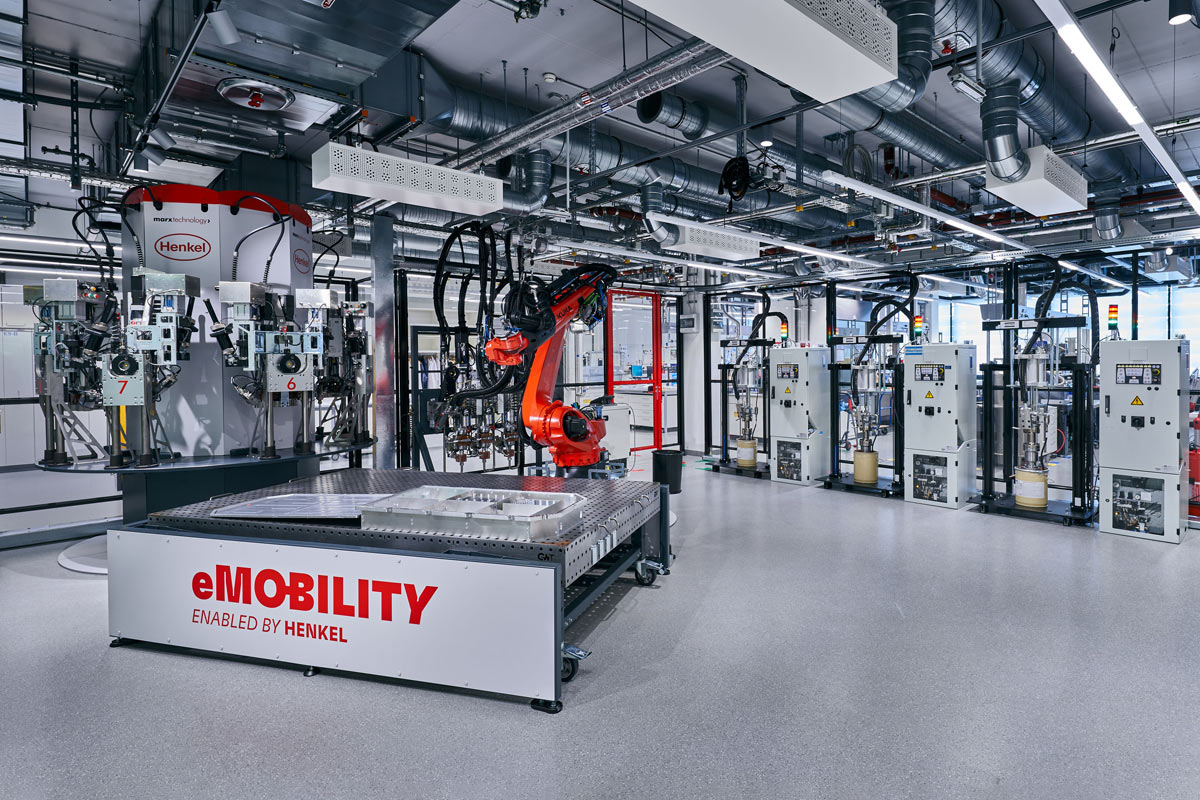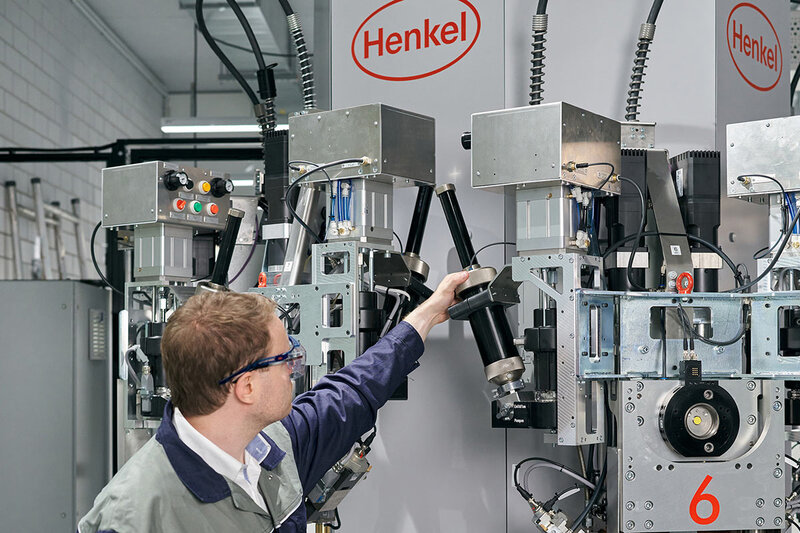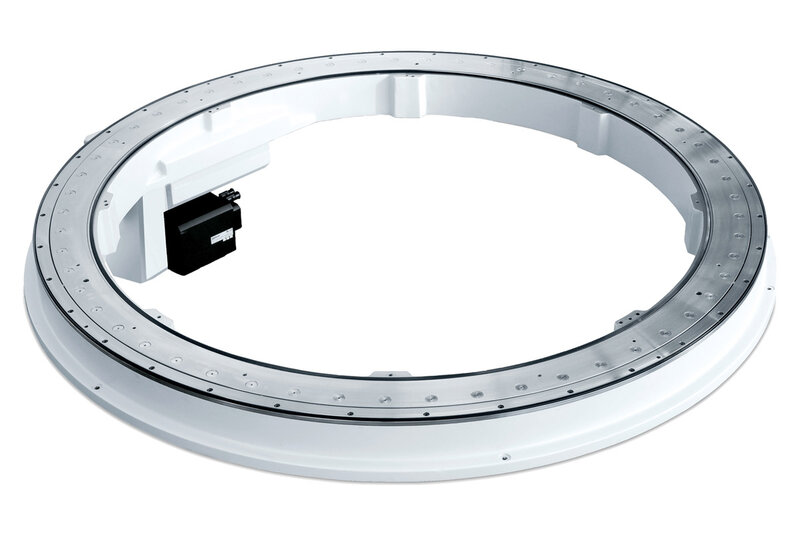
Enabling big results on a compact footprint
In Henkel’s new Battery Engineering Center, a wide range of battery systems can be analyzed, tested and modified. When developing the production and inspection systems, the focus was on reliability, visual aesthetics and the smallest possible footprint – especially when designing the bonding process. The TR rotary indexing ring from WEISS provided the ideal solution.
At the Henkel Innovation Center in Düsseldorf, Henkel co-develop next-generation battery systems with its customers. This includes disassembly of incoming batteries, digital modeling and simulation work to build digital twins and simulate the performance of Henkel’s materials in that battery system under various conditions. Furthermore, dispensing materials, such as adhesives, sealants, thermal materials, and battery safety materials, into the battery systems is displayed as an automated process. The automated systems in Henkel‘s Battery Engineering Center were developed and set up by Marx Technology.
Alongside the reliable availability of the system and the functional aspects, the system layout also clearly focused on visual aesthetics. “The planning for this project really did begin on a blank piece of paper. Henkel came to us with the concept and a detailed vision, and with the help of 3D and 4D planning tools, we developed the ideal solution,” reported Marcel Blatzheim, Head of Mechanical Design & Technical Sales at Marx Technology. A major focus was on the bonding and dosing technology used in battery pack assembly. For the dispensing or bonding process, battery packs with a total weight of up to 800 kilograms are placed on a welding table that measures 1.6 x 2.4 meters. On the table, the adhesives and sealants are applied. In this process, the robot picks the relevant dosing units from the rotary tool system.
Provision of tools
The dosing units are temporarily stored in a tower. A total of six of the eight dosing units installed in the overall system are stored in the rotating tower. A 25 mm-thick rotary disk made of powder-coated aluminum with a diameter of 2.5 meters lies on top of the tower. “The base of the tower is a TR rotary indexing ring from WEISS. A weight of around 1.8 tons rests on this indexer,” explained Blatzheim. The TR rotary indexing ring has a 16-position pitch, although theoretically eight carrier stations would have been enough. “With a 16-position pitch, the indexer‘s moment of inertia is significantly higher than with eight positions.

Since the requirements for the Battery Engineering Center centered on the load capacity and the visual aspect, this solution was ideal,” explained Tino Kessler, Technical Sales Manager at WEISS and first point of contact for Marx Technology. The moment of inertia of the TR rotary indexing ring in this design is 3,460 kg m2. According to Blatzheim: “In addition, the indexer is oscillated, which means that 50% of the stations swing to the right and the other 50% to the left. The indexer and, therefore the entire tower, can be rotated in both directions and swings around a central position. This is how we avoid cables breaking.” The WEISS indexer has a rotation time of 1.98 seconds. WEISS supplied Marx with the rotary indexing ring, including the web-based EF2 control system. The control system enables optimal operation of the indexer and its integration into the overall system on the control side.
Solution with a small footprint
Instead of rotating the dosing units to make them available, the initial concept included linear provision. But this took up too much space in the system. In addition, the supplier of the dosage technology required that the dosing units are permanently connected to the associated control systems. The team at Marx therefore decided in favor of a space-saving arrangement. An important factor here was that there is enough space inside the tower for supplying the media to the dosing units. Each dosing unit had to be equipped with at least one cable. One cable is two centimeters thick. In conjunction with the large work area, the original linear arrangement would have made cable management difficult, and it did not meet the end customer’s requirements for the visual appearance of the system.

Thanks to the WEISS TR and its very generous inner diameter, there was still about one meter of space inside the rotating tower. This is where the cable retraction mechanism is installed. When a dosing system is removed from the tower, the required cable length is extended. When the robot puts it back, the cable is retracted. The cable retraction mechanism also includes a reliable sensor system with a warning level that checks the extension and retraction of the cable. More than four meters of cable can be extended per dosing unit, and the cables are hidden inside the tower. This aesthetically streamlined solution impressed the management at Henkel.
For Marx Technology, the aesthetic challenge posed by the system was a real highlight. “When it comes to automated systems, customers typically have demands regarding the availability, cycle time and precision. However, at Henkel they also valued an appealing, streamlined system layout. It was definitely an incentive to rethink systems under these circumstances.” The rotary indexing table solution from WEISS is what made this system design with a compact footprint possible at all.